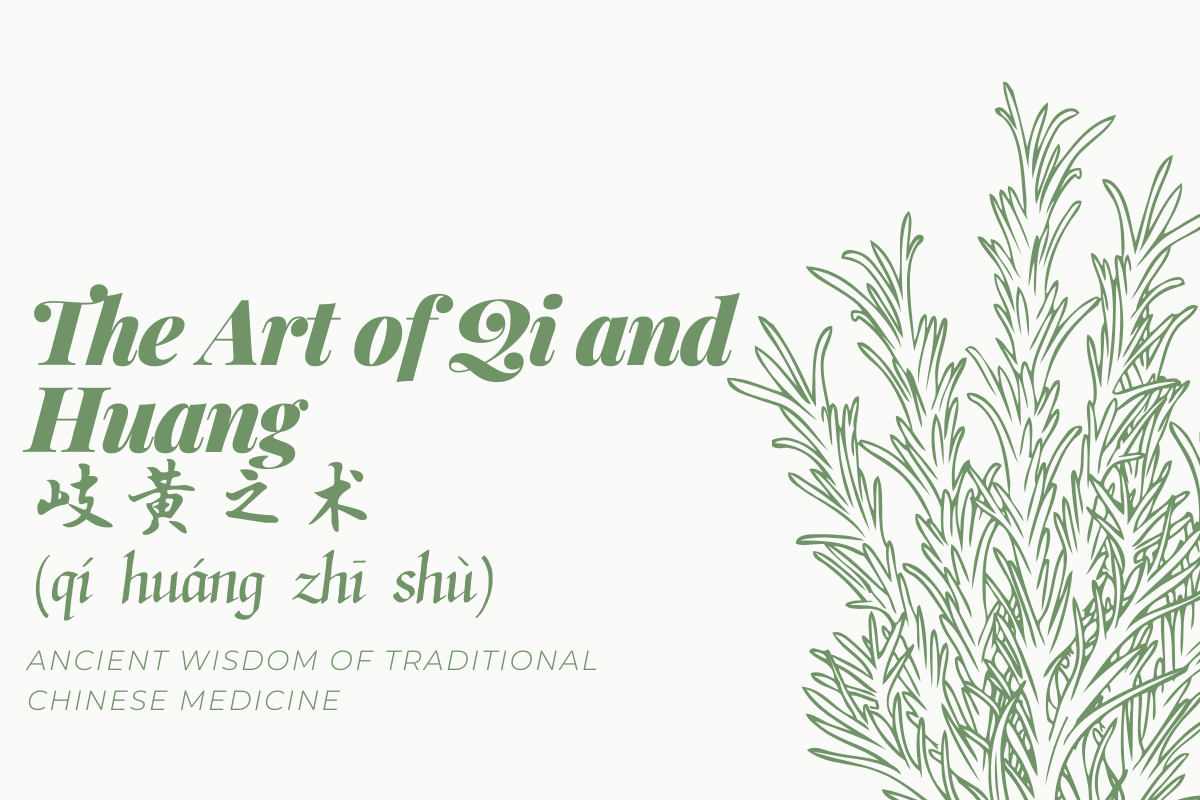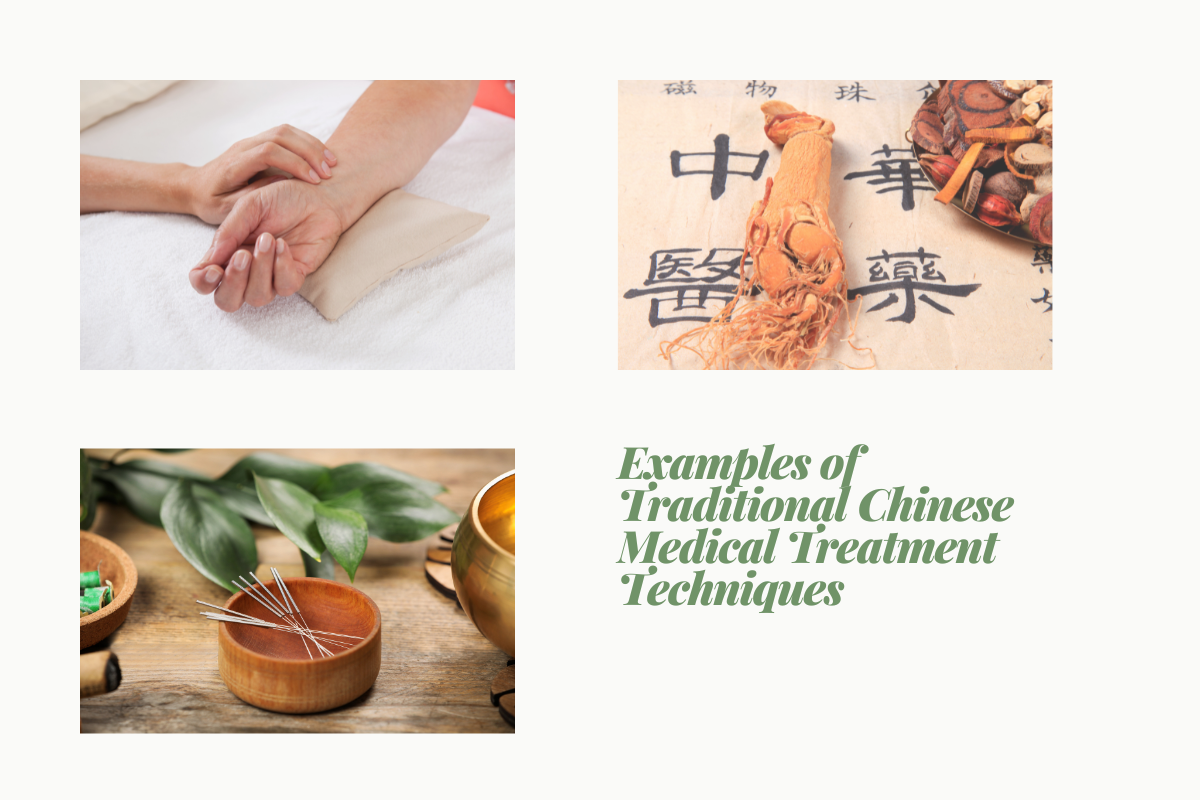The Art of Qi and Huang(岐黄之术Qí huáng zhī shù): Ancient Wisdom of Traditional Chinese Medicine
In the ancient and venerable land of China, there exists a medical system that has been preserved for millennia, known as the "Art of Qi and Huang 岐黄之术(Qí huáng zhī shù)" ,which is commonly referred to as traditional Chinese medicine. This appellation originates from a classic medical work from ancient China— the "Yellow Emperor's Inner Canon."

The "Yellow Emperor's Inner Canon" and the Art of Qi and Huang
The "Yellow Emperor's Inner Canon" stands as the oldest surviving theoretical masterpiece in traditional Chinese medicine, composed during the periods of the Warring States and the Qin-Han dynasties. Structured as dialogues between the Yellow Emperor and Qí Bó, this volume encompasses the fundamental theories, diagnostic methods, treatment principles, and health preservation aspects of traditional Chinese medicine. The Yellow Emperor, a legendary tribal leader in ancient Chinese folklore and deemed as one of the forefathers of the Chinese nation, is revered, while Qí Bó, believed to be a physician and minister of the Yellow Emperor. In commemoration of their contributions, traditional Chinese medicine came to be known as the "Art of Qi and Huang."
Core Tenets of the Art of Qi and Huang
At the heart of the Art of Qi and Huang lies the emphasis on the harmonious unity between the human body and nature, placing importance on disease prevention and advocating for the maintenance of health through reconciling 调和(tiáo hé) Yin and Yang, qi and blood, and the functions of the lungs in the human body. The diagnostic methods of traditional Chinese medicine are unique and refined, primarily reliant on the integrative approach of the "observation, listening, questioning, and pulse-taking" techniques. Observation involves examining the patient's complexion, tongue coating, eye expressions, and physical form to gather health information; listening involves discerning the conditions based on sound and scent; questioning entails detailed inquiries about symptoms, medical history, and lifestyle habits; pulse-taking, the most recognized method, involves the palpation of the patient's pulse at the wrist to perceive changes and understand inner bodily conditions. These four methods complement each other, enabling physicians to comprehensively and accurately assess the patient's illness. Additionally, the treatment modalities in traditional Chinese medicine are diverse, including herbal medicine, acupuncture, massage therapy, and dietary therapy, all reflecting the holistic perspectives and principles of differential diagnosis and treatment in traditional Chinese medicine.

调和(tiáo hé),动词,reconciling
Example:
- Persuasion is used in dealing with or reconciling different points of view》
说服这一方法适用于处理或调和不同的观点。
shuō fú zhè yī fāng fǎ shì yòng yú chǔ lǐ huò tiáo hé bù tóng de guān diǎn - We will need to reconcile environmental protection with social inclusion.
我们需要调和环境保护与社会包容。
wǒ men xū yào tiáo hé huán jìng bǎo hù yǔ shè huì bāo róng
Historical Transmission of the Art of Qi and Huang
The Art of Qi and Huang has passed through millennia of transmission and development. From the compilation of the "Yellow Emperor's Inner Canon" to Huatuo's invention of the anesthetic 麻醉剂(má zuì jì) "má fèi sàn" in the waning years of the Eastern Han Dynasty, and the Ming Dynasty compilation of the "Compendium of Materia Medica" by Lǐ Shízhēn, traditional Chinese medicine has achieved remarkable strides in theory and practice. Even in this modern age of advanced medicine, traditional Chinese medicine continues to play a significant global role, safeguarding the well-being of individuals.
麻醉剂(má zuì jì),名词,anaesthetic
Example:
- An anaesthetic was administered by injection.
麻醉剂已注射入体内。
má zuì jì yǐ zhù shè rù tǐ nèi - For several hours after the operation the patient was lethargic because of the anaesthetic.
手术后几小时,病人因麻醉剂的作用而昏睡着。
shǒu shù hòu jǐ xiǎo shí,bìng rén yīn má zuì jì de zuò yòng ér hūn shuì zhe
The Art of Qi and Huang serves not only as a treasure in Chinese medicine but also as a vital component of Chinese traditional culture. It embodies rich philosophical thoughts and humanistic spirits, manifesting the profound understanding of life, health, and nature by the ancient Chinese populace. To this day, traditional Chinese medicine remains a radiant star in the vast expanse of the Chinese land.